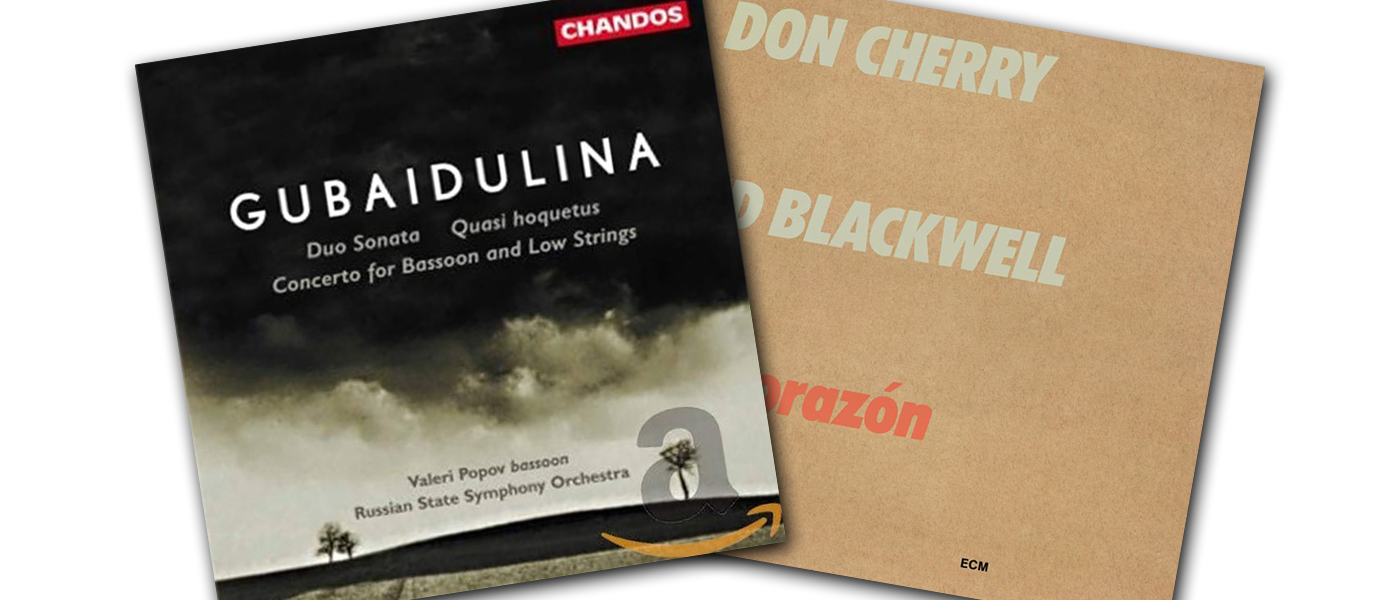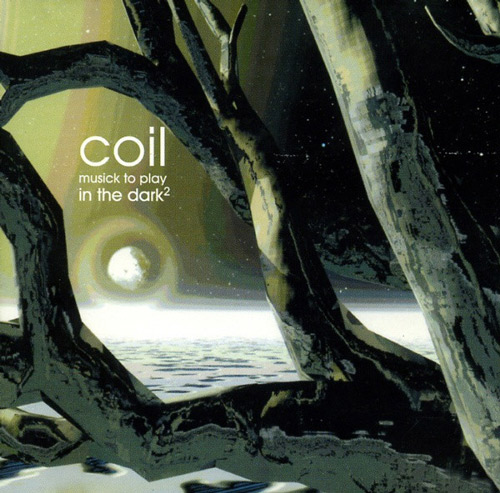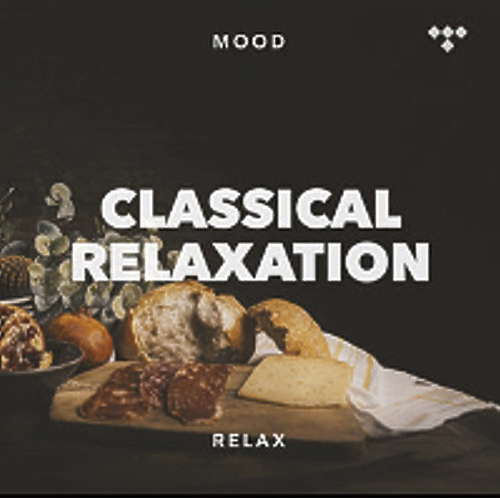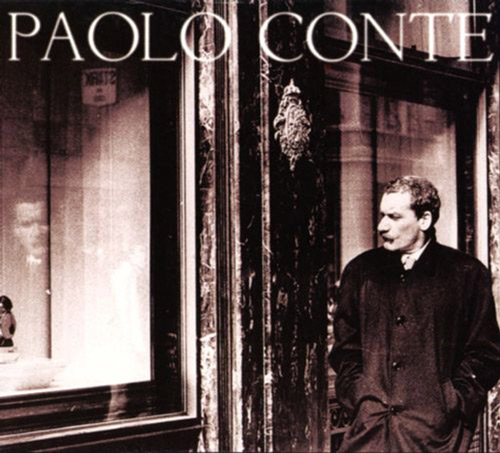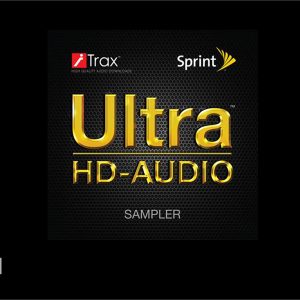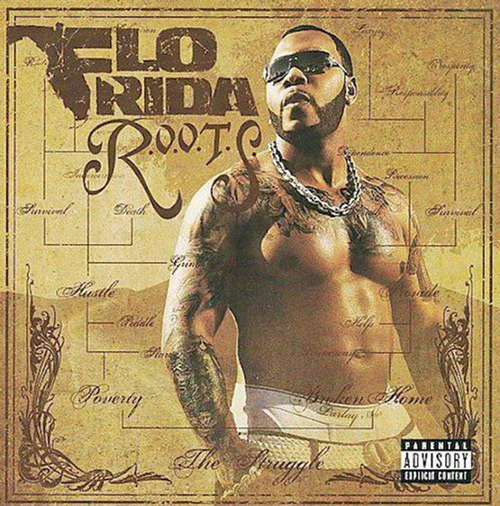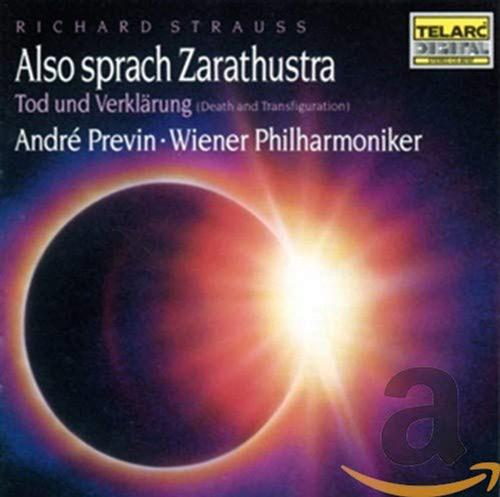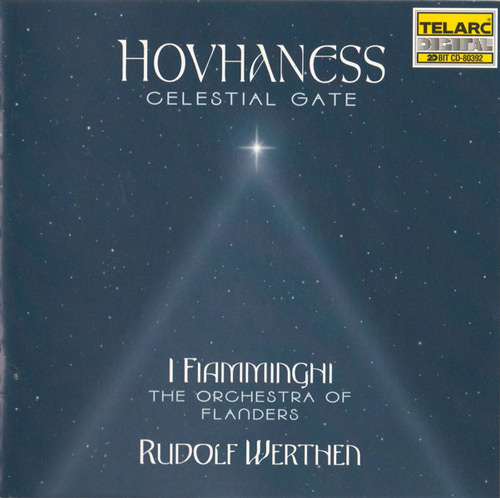San Francisco Symphony with Michael Tilson Thomas Conducting, Mahler Symphony No. 5, SFS Media, 2006, Multi-Channel SACD
A few years ago, I got the chance to perform Mahler’s Fifth Symphony with a local orchestra in New York. I was not familiar with the piece at the time so, in preparation, I went looking for a good recording to help me learn it. Fans of the San Francisco Symphony will already know that they and their director, Michael Tilson Thomas, won a total of seven Grammy Awards for their Mahler Symphony Cycle recorded on their own label and released on multi-channel SACD.
That was enough to convince me their recording was the one to buy.
Since then, I’ve come to use this disc as a reference recording for many reviews of audio components and disc players. Like all the discs in the set, it was recorded from multiple live concerts rather than in closed session. One would never know this because all audience noise has been erased leaving just the breathtaking performance behind. This disc should be considered a benchmark for modern orchestras. The cleanliness of playing is simply sublime. Balance is perfect in my opinion with no instruments ever dominating unless the music calls for it.
There are many interpretations of Mahler’s music and just as many opinions on which is the best. I won’t delve into the details of rubato or texture. I just gravitate to the performance that sounds right to me. And this is the one. Since buying this disc, I’ve listened to a number of other performances, mostly by European orchestras, and none are as engaging or satisfying.
If you’re looking for a definitive performance of this amazing work, look no further than the San Francisco Symphony’s SACD. Musicologists wondering which edition it is, it’s Mahler’s final edit, first published in 1964. Enjoy!
Boduf Songs, Abyss Versions, Blueberry Ice Cream Sundae purple transparent vinyl LP, purchased via Bandcamp
Boduf Songs is the recording name of Englishman Mat Sweet, and this is his seventh full-length album. I tend to think of his style and guitar playing as if Leonard Cohen had stuck with the sparse style of his first three albums (though Sweet has occasionally ventured into heavier music). Sweet’s acoustic guitar playing is picked and strummed in much the same manner as Cohen did it, with a deep, echoed tone.
But Boduf Songs lyrics are so dour, so heavy, so morbid that it makes Cohen sound like Ronald McDonald. Here are some Boduf Songs song titles: “Behold, I Have Graven Thee Upon the Palms of My Hands; Thy Walls are Continually Before Me,” “My Continuing Battle With Material Reality,” and “The Giant Umbilical Cord That Connects Your Brain To The Centre Of The Universe.” It’s like John Milton’s Paradise Lost set to guitar.
As morbid as the lyrics and song titles are, the music is achingly beautiful. Sweet sings softly and layers his vocals quite a bit, giving the impression of monks walking in a line, mumbling about penitence to a terrible god, and hitting themselves in the face with a wooden plank. Sweet uses electronic instruments throughout, but the music rarely gets fast or heated. It’s much like a slow boil. It’s all very well recorded and quite engaging. Just imagine the kind of music Radiohead would record after a very bad day.
There are six Boduf Songs albums available for listening and purchase on Bandcamp. Each is excellent.
Secrets Sponsor
Coil, Music To Play In The Dark Volumes 1 and 2
In 1999 and 2000 the band Coil released Volumes 1 and 2 of their Music To Play In The Dark series. The primary members of Coil, Peter “Sleazy” Christopherson, and John Balance had wide and varied experience experimenting with and mastering advanced studio and psychoacoustic recording techniques, and ingestion of hallucinogenic substances. All of these are very well evident on these two recordings.
Each volume is a seamless series of songs that run for an hour.
The music and sounds in each are so evocative and visual that I’ve come to think of each work as a novel. Some of Coil’s favorite subjects, like pagan magic, alchemy, and time travel are reflected in the lyrics. It all has an ethereal and other-worldly quality but is still completely comfortable.
Even more remarkable is the quality of the recordings. Each and every second feature sounds and textures which vary greatly and surprise constantly. The variety of sounds is so wide it seems to encompass most forms of music. You’ll hear electronic techno pulsing with very very deep bass notes one second, then gentle sweeps of white noise and synthesized bird chirps the next. The clarity and frequency range of the albums are nothing short of spectacular, and can really test the limits of a good playback system.
These are albums I must dedicate listening time to. I cannot listen to them with any distractions. I can only listen to them in the dark (and, well, their very name instructs the listener to do so). I believe they actually hypnotize me. I’m sure a lot of you feel this way about one particular album. You may say, “Tonight, I’m going to get lost in Dark Side of the Moon in high-res. A treat for myself.” We all have albums like that. For many years, Dark Side of the Moon was my “Dark Side of the Moon,” as it were. But now it’s these two Coil albums. I really do think they’re better than Dark Side of the Moon.
Sometimes the best music is the hardest to find and own. Coil and their cohorts in the United Dairies scene (Nurse With Wound, Current 93, etc.) were and still are dedicated practitioners of the art of artificial scarcity. A great many of their works, whether they were on black vinyl or silver aluminum, were usually released in very limited editions, and often with different variations. They are both a collector’s dream and nightmare (if you’re a completist, you’re going to need a lot of time and money). For example, there were 1,000 copies of the Volume 2 album pressed on pearl vinyl, and they’re selling for around $500 US nowadays.
Sadly, Coil is no more. Both Balance and Christopherson are no longer with us. But their catalog is extremely deep and varied and is worth looking into if you’re seeking adventure.
To the best of my knowledge, these two Coil recordings are not available on any commercial streaming services. But the CDs can be purchased for prices that aren’t too crazy nowadays. If you’re looking for two hours of solid sonic surprises, seek these out.
Lang Lang – At the Royal Albert Hall, Sony, Released 4/24/2020
This album is mostly Mozart and Chopin, and it reminded me, after listening to some Rachmaninoff, how different the European composers were, although from a different time period in classical music history. But I don’t know why I am even commenting on this because these three composers are known to anyone who listens to classical music, perhaps even those who don’t listen to it.
Lang Lang is one of our most brilliant current pianists, and here, his abilities are on full display, audibly if not visually.
I have never heard him in person. That is my loss. But digital music streaming (via Tidal) is one way of minimizing this. It’s a wonderful new album.
Classical Relaxation, Tidal Mix
One feature of streaming services is that they provide their own array of tracks from several albums that have a particular focus, in this case, “classical relaxation”. I very much enjoyed listening to this one, from Tidal streaming.
Lester Young, Top Tracks (Tidal streaming)
Lester Young was one of America’s legendary tenor sax jazz musicians. He started in 1927 and worked with the likes of Billie Holliday and Count Basie. He was an alcoholic and suffered from mental issues (I think this was a prerequisite for several of the expressive jazz geniuses, along with, in some cases, a tour in prison). Even in the 1950s, he was still a giant in the jazz arena but died in the latter part of that decade from his alcohol problems. This Top Tracks set from Tidal will introduce you to the works from this amazing talent.
Mozart – Piano Concertos Nos. 22 and 24 – Charles Richard, Jonathan Cohen – Analekta – Released 1/31/2020
Ah, Mozart! Is there any composition of his that is not marvelous? This new release (January 2020) has two pianists displaying this genius from the classical period.
It’s very relaxing, and that is what I am focused on in this anxiety-provoking period in our lives. What a shame he died so young, but even so, he was incredibly prolific. I am still trying to figure out how accurate his death is portrayed in Amadeus.
Did what’s his name really have such an influence?
Anyway, enjoy it. I listened via Tidal. Streaming is the future. All albums on the planet are at our beck and call. But only on a temporary loan. At first, I objected to not having them on my hard drive but I am now completely happy. Thousands of albums available anytime I want, as long as my Internet connection doesn’t crash.
Bob Newhart – Tidal Tracks
In keeping with the stress of COVID-19, here is a set of tracks from several Bob Newhart albums over the years, via Tidal streaming. He was the entertainer at my 1968 graduation from the University of Washington, in Seattle, Washington.
What was surprising, is that Newhart didn’t use any bad language. Very unusual, compared to the language used in comedy these days. What do you know? A comedian can be funny without saying F***.
Paolo Conte, The Best Of Paolo Conte, Nonsuch Records, 1996, CD
Being from an Italian family, it’s no surprise that I grew up listening to Italian music. My mother had several transistor radios strewn throughout the house where she could tune in the local multicultural radio station during the hours where Italian news and music would be on. I remember most of the songs from the sheer repetition of play, but I couldn’t say that any of them, save for the odd one, spoke to me on any particular level.
Then along came Paolo Conte and he completely knocked my socks off. His was unlike any of the other Italian music I had been exposed to. Witty, urbane lyrics with a wry sense of humor combined with musical stylings that range from, vaudeville to jazz with a little bit of a film noir sensibility. His gravelly voice and piano bar persona often draw comparisons to early Tom Waits but Conte doesn’t go off the screaming avant-garde deep end that Waits seems to frequently play in. More specifically, take one part Tom Waits, two parts Leon Redbone, a twist of Leonard Cohen and a dash of Martini & Rossi, shake well, and that gives you Paolo Conte. Listening to the different tracks of this album you immediately realize you are being told various stories in the most stylish and sophisticated of ways. Each one seemingly dripping with life experience. It’s not even important that you know Italian to appreciate the feel and the mood of each track, the general message still comes across. However, English translations to the lyrics are provided in the booklet for your reading pleasure. This particular compilation consists of re-recorded versions of many of Paolo Conte’s more well-known songs, expressly for this release. It’s nicely recorded and its Mastered by Bob Ludwig even. Play it on a nice quality system, perhaps with an adult beverage in hand, and enjoy something a little different for a change.
Paolo Conte, Nelson, Nonsuch Records, 2010, CD
Conte was 73 years old when he put this album out, after a bit of a hiatus where he was pursuing other projects. The 14 years between this and the Best Of CD don’t seem to have dulled his creative sensibilities one bit. Through the 15 tracks on this album, Paolo Conte bounces between Jazz, Swing, R&B, and a little Latin music while singing in his native Italian, Spanish, French, and English. His gruff vocals still sound expressive and rich, fully capable to emote the love, loss, pain, and bizarrely humorous situations he covers in Nelson.
Again, you don’t necessarily need to know a foreign language to enjoy this music, but complete English translations of the lyrics are available in the booklet should you wish to completely grasp the intentions. I don’t drink scotch but listening to this music makes me think that I should.
Various Artisits, iTrax/Sprint Ultra HD-Audio Sampler, AIX Records, 24/96 WAV or FLAC Download
As a reviewer, I’m always on the hunt for good content to play for testing speakers and headphones, headphone amps, even components like receivers, processors, and amplifiers.
I do have a list of favorites. I know what they sound like, and it makes it easy to compare them on a variety of equipment.
I’ve just gotten a download from iTrax, which has a unique catalog of high resolution, mostly acoustic recordings. It’s a sampler from the AIX Records extensive catalog, which contains 18 full length, stereo 96 kHz/24-bit tracks. Best of all it’s free. Zip. Nada.
It is a nice gesture from iTrax’s head honcho, Mark Waldrep, a seasoned recording engineer, and producer. The 18 tracks are among his personal favorites from their collection. Unlike so many recordings today, these are done with no artificial reverberation, no equalization, and very natural dynamics.
Here’s a tracklist:
- Laurence Juber – Strawberry Fields Forever (from Guitar Noir – AIX 80018)
- The Banda Brothers – Primavera (from Primavera AIX 85050)
- Carl Verheyen – Lone Star (from Rumor Mill AIX 83039)
- John Gorka – Let Them In (from The Gypsy Life AIX 85043)
- Ernest Ranglin – My Boy Lollipop (from Order of Distinction AIX 85047)
- Zephyr – Now Is The Month Of Maying (from Voices Unbound AIX 80012)
- Lowen & Navarro – Cold Outside (from Carry On Together)
- Jamie Hanna & Jonathan McEuen – Lowlands (from Tried & True)
- Albert Lee – Luxury Liner (from Tearing It Up AIX 85054 )
- Willie Nelson & Paul Williams – Rainbow Connection (from The Gypsy Life AIX 85043)
- Jonathan McEuen – Prayer For You (from One Step Ahead AIX 80029)
- Steve March Tormé – On the Street Where You Live (from Tormé Sings Tormé AIX 83042)
- James Walker and Free Flight – Libido (from Threads AIX 86063)
- The Latin Jazz Trio – Mujaka (from The Latin Jazz Trio AIX 80011)
- The Old City String Quartet – Mozart Clarinet Quintet K. 581 – Movt 1 (from Mozart – Clarinet Quintet K. 581, Horn Quintet K. 407 & String Quartet K. 169 – The Old City String Quartet)
- Bryan Pezzone – Berceuse (from Piano Pieces from Mozart, Schubert, Elgar and Pezzone AIX 86064)
- G. Enescu Philharmonic Orchestra – Brandenburg Concerto No. 3 Mvt I. Allegro (from Bach Brandenburg Concerto No. 3 and No. 5 / Air on the G String 1338AX)
- G. Enescu Philharmonic Orchestra – Pavanne for a Dead Princess (from Mixtures I: A Classical Surround Sampler – Various Artists AIX 81007)
This is a great selection for a reviewer, and most music lovers. A variety of music, with folk, jazz, and classical.
How Does it Sound?
I’m sure it will come as no surprise, but these selections sound great. All the tracks had something to offer, and I especially liked Strawberry Fields Forever, Prayer for You, and the Brandenburg Concerto movement.
As headphones can be particularly revealing, I listened on a variety of headphones I had on hand and enjoyed the acoustic music emerging from a completely noiseless background. All I could hear was the acoustics of the room. No electronic noise at all. On speakers and headphones, the stereo image is very sharp, indicating excellent mike placement. Each track has a very ‘you are there’ sound to it.
Should I grab it?
Of course. This is normally a $10.00 download, and it’s free for now. You can download it from this link. You can get it in FLAC or WAV format. This download is best done on a computer, rather than a smartphone.
So Kudos to Mark Waldrep and the iTrax team for making these recordings available. It’s what I’m listening to now.
Don Dorsey, Bachbusters, Telarc, 1985, CD
Any subwoofer workout absolutely MUST include J.S. Bach’s “Toccata and Fugue in D Minor.” It’s the classic, and this synthesized version eliminates the usual echoes and acoustic blur of a true organ venue. The 1985 release, on the Telarc label, reinforced the Telarc reputation for having some of the most speaker-damaging bass available. Many a ported speaker has been sacrificed to the 11-second, 19 Hz. sustained note at 5:17.
Don’t try to play this loudly on your “home theater” subwoofers – they were never designed for this low a frequency, and many a cone will just “flap in the wind” bottoming the suspension and potentially damaging the driver.
D.J. Magic Mike (Vicious Bass), You Want Bass?, Cheetah Records, 1991, CD
At the far end of the spectrum from Bach, we have Miami’s infamous D.J. Magic Mike with his 1991 Album “Back to Haunt You!” I can’t find any comment on the frequencies on this cut, but I can tell you that it rattles the china in my kitchen more than any other track I own. Not only are the bass notes deep, but they are sustained long enough to energize your room fully. Want to see what isn’t secured well in your house? Magic Mike will help you out!
Erich Kunzel and the Cincinnati Pops, Ein Straussfest, Telarc, 2006, CD
For percussive bass, the effects in Johann Strauss’s “Explosions Polka” and “Unter Donner und Blitz Polka (Thunder and Lightning Polka Op. 324)” are enough to evoke a jump and a scream (“Turn That DOWN”) from my wife every time. If your speakers or subwoofer have difficulties in starting their cone movement on transients, this is the disc to tell you about it. Listen for the “pop” on the impacts. If you hear any blurring of the transient, your drivers are too slow.
Of course, if you already own the speakers, there’s not a thing you can do about it, but this disc is an excellent test disc for speaker auditioning for that specific reason.
Flo Rida, Right Round (featuring Ke$ha), Poe Boy/Atlantic Records, 2009, CD
This one is from the 2009 CD “ROOTS.” Although the bass isn’t particularly deep on this track, it’s prominent enough in the mix to give your subs a workout at high volumes. I also like the synth counterpoint.
Richard Strauss, Also spracht Zarathustra, Telarc, 2006, CD
The Telarc recording by André Previn and the Wiener Philharmoniker opens with 20 seconds of a 16-Hz. organ pedal tone. This is below the capabilities of almost ALL subwoofers, and should not be attempted at any significant volume unless you have a subwoofer of exceptional range with LOTS of watts. The majority of speakers and subs reproduce this frequency an octave higher with the 32 Hz. harmonic being dominant.
If your sub does reproduce the 16 Hz. fundamental, you’ll typically be getting more distortion than signal, and you won’t be able to hear the tone – only feel it in your diaphragm.
Vaughan Williams, Symphony #5 in D major, Andre Previn conducting the Royal Philharmonic Telarc CD-80158
Fantasia on a Theme by Thomas Tallis is also on this CD. James Mallinson is the producer with Jack Renner as Engineer.
Some have compared the COVID crises to a war. The Vaughan Williams Symphony# 5 was written during World War II. It is proceeded by his most dissonant symphony, #4 of 1935. That is said to have predicted the coming war. Symphony #6 is an angry work depicting what happened during the war.
In the 5th Symphony of 1943, Vaughan Williams offers hope during the war. The orchestra is of classical proportions with 2 horns, 8 woodwinds, two trumpets, and tympani. The 3 trombones represent the only expansion.
Wikipedia provides me a quote from a reviewer at the first performance. Neville Cardus wrote, “The Fifth Symphony contains the most benedictory and consoling music of our time.”
The work is mostly based on modal scales Vaughan Williams learned from the choral tradition of England. An early example is his great early work the Fantasia, based on a theme of the 16th-century choral composer Thomas Tallis. Vaughan Williams was also exposed to modal music in his early work transcribing English folk tunes and that folk tradition is also in this work.
It is considered one of the greatest symphonies ever written and it achieves this without any part of the score rising up and shaking its fists. The first movement is marked moderato and moves to a faster allegro before moving back to the slower tempo. It is marked by some bitonality which some commentators hear as representing light and dark.
Secrets Sponsor
A short wispy scherzo follows. The heartbreaking 3rd movement Romanza marked Lento is next. The work concludes with a passacaglia again marked moderato. At the end of the movement, it moves to major. Michael Steinberg, a critic of our time, says of the ending “In peaceful meditation… the music arrives at its destination: a luminous D major close, hushed, beatific, with an ineffable sense of peace. Here, if anywhere in music, is transcendence.”
That quote comes from a larger overview of the symphony found here.
A complete analysis of the work, with orchestra, can be found here.
It is presented by the BBCs Stephen Johnson who is especially fond of this work and it shows.
The work has over 30 recordings including one by the composer which is required listening for those that can tolerate historic recordings but it is not the place to start. If one thing is clear it is that this is a symphony with international appeal with more than one recording by a Russian conductor. At least 5 Americans have set it to disc. Some conductors known for 18th-century music with original instruments have not been able to resist producing a CD of this work.
It is hard to pick any one performance. At one end are conductors who may not bring enough contrast to it while others may introduce too much of an edge. No symphony of this importance is going to have a single definitive recording.
I learned of this work with the late Andre Previn’s performance as part of only the 2nd complete Vaughan Williams symphony cycle which did not appear until 1972. You can stream this, Previn also did a PBS series on these symphonies, as they appeared on LP. I was totally hooked after those broadcasts.
Previn’s second reading, 15 years later, which is on Telarc, may be an even finer performance. Previn later recordings tend to be slower but not this one. He takes over a minute out of the final bringing the time closer to the composer. The slow movement, however, is not how VW saw it coming in at 3 minutes over his own interpretation, but to my mind, it is wondrous at any speed.
If you are looking for something other than the Previn interpretations, a well-respected performance, that does stream, is the Richard Hickox with London Symphony Orchestra on Chandos.
Hovhaness Symphony No. 2, Op. 132, Mysterious Mountain Fritz Reiner conducting the Chicago Symphony, Producer Richard Mohr / Engineer Lewis Layton, Out of Print
Hovhaness Symphony No. 6, Op. 173 Celestial Gate, Prelude and Quadruple fugue Op. 128, Alleluia and Fugue Op 40b, Concerto No 7, Op. 116 for Orchestra. Telarc CD-80362
Orchestra of Flanders conducted by Rudolf Werthen. Producer James Mallinson / Recording Engineer Jack Renner
More music in the time of COVID. Alan Hovhaness (1911 – 2000) was an American composer of Armenian descent. He was very prolific with over 500 works.
The Hovhaness musical language uses modal polyphony of the Renaissance coupled with very complex rhythmic patterns from Armenian folk music. Later he would add Indian and Japanese influences. He also infuses his works with complex counterpoint. Walter Simmons writes, “Hovhaness intended his music to evoke spiritual states that transcended the concerns of mundane life.”
Stokowski premiered what is now known as Symphony #2. Stokowski called Hovhaness for some information about the work, Hovhaness provides this story:
“He said, ‘I like your titles, give it a title.’ And so I gave it the title, Mysterious Mountain. Which I felt was mysterious enough “ … ‘Does it have an opus number? People like opus numbers. … So I said, ‘No, it doesn’t have an opus number. I haven’t cataloged my work.’ ‘Well how would 132 or something like that, I think—’how would that be, do you think that gives you enough room for the things you’ve written? And I said, ‘Sure, that’s okay”.
The work begins and ends with slow movements. The second movement is an almost impossible-to-play double fugue but the Chicago Symphony outdid themselves. A double fugue has two subjects. Hovhaness was a master of fugues. The Fritz Reiner recording of the work was a hit and it has gone on to many other recordings. The Reiner is out of print but sells used for $4.00.
A detailed analysis of the symphony can be found here.
Much of Hovhaness music is ideal for the time of COVID but only a fraction is available for streaming. The symphony #6 Sinfonia n. 6 op. 173 “Celestial Gate” is available in a wonderful recording on Telarc with the Orchestra of Flanders under Rudolf Werthen. Nothing on Telarc streams. This CD also contains the Prelude and Quadruple Fugue among other excellent works.
Celestial Gate is a painting by, what the liner notes call, the mystic painter Hermon di Giovanno. “He was my spiritual teacher who opened the gate of the spiritual dimension”.
You can follow all four of the subjects in the Prelude and Quadruple Fugue without trying hard. All four subjects are presented in the prelude. Yours, used on Amazon, for about $4.00.
Hovhaness created a self-published label from which Crystal Records produced 16 CDs of his music. Crystal is not available for streaming. CD811 called “Hovhaness Treasures” is a good place to start. If you only want to stream you will find enough of Hovhaness’s music to explore. He is far more than a composer who wrote one work.


